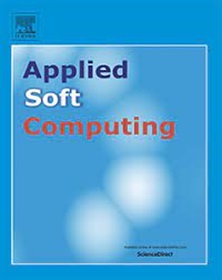结合隔离林模型,采用表格GAN进行数据增强的跌落检测系统
IF 6.6
1区 计算机科学
Q1 COMPUTER SCIENCE, ARTIFICIAL INTELLIGENCE
引用次数: 0
摘要
有效的跌倒检测系统(FDS)对于尽量减少老年人严重受伤的风险至关重要。然而,跌倒检测数据的有限可用性和不平衡性为开发准确的模型带来了重大挑战。本文提出了一种利用表格生成对抗网络(GAN)生成的合成数据,结合隔离森林和自编码器模型来提高跌倒检测精度的新方法。对数据集进行5倍和10倍的扩充,采用曲线下面积-接收者工作特征(AUC-ROC)和曲线下面积-精确召回率(AUC-PR)指标对模型进行评价。值得注意的是,隔离森林模型的AUC-ROC和AUC-PR分别从0.49和0.43(未增加)提高到0.59和0.63(增加5倍)。同样,Autoencoder从0.4 (AUC-ROC)和0.2 (AUC-PR)增加到0.5和0.54。这些结果证明了综合数据在提高异常检测性能方面的有效性。研究结果表明,先进的数据增强技术显著改善了FDS,从而提高了弱势群体的安全和生活质量。本文章由计算机程序翻译,如有差异,请以英文原文为准。
Fall detection system using tabular GAN for data augmentation with integration of isolation forest model
Effective Fall Detection Systems (FDS) are essential to minimize the risk of severe injuries among the elderly. However, the limited availability and imbalanced nature of fall detection data pose significant challenges to developing accurate models. This paper proposes a novel approach to enhance fall detection accuracy by using synthetic data generated through Tabular Generative Adversarial Network (GAN), combined with Isolation Forest and Autoencoder models. The dataset was augmented by factors of 5 and 10, and the models were evaluated using the area under the curve-receiver operating characteristic (AUC-ROC) and area under the curve–precision recall (AUC-PR) metrics. Notably, the Isolation Forest model improved from an AUC-ROC of 0.49 and AUC-PR of 0.43 (without augmentation) to 0.59 and 0.63, respectively, with 5x augmentation. Similarly, the Autoencoder showed an increase from 0.4 (AUC-ROC) and 0.2 (AUC-PR) to 0.5 and 0.54 with the same augmentation. These results demonstrate the effectiveness of synthetic data in improving anomaly detection performance. The findings suggest that advanced data augmentation techniques significantly improve FDS, thereby enhancing safety and quality of life for the vulnerable population.
求助全文
通过发布文献求助,成功后即可免费获取论文全文。
去求助
来源期刊

Applied Soft Computing
工程技术-计算机:跨学科应用
CiteScore
15.80
自引率
6.90%
发文量
874
审稿时长
10.9 months
期刊介绍:
Applied Soft Computing is an international journal promoting an integrated view of soft computing to solve real life problems.The focus is to publish the highest quality research in application and convergence of the areas of Fuzzy Logic, Neural Networks, Evolutionary Computing, Rough Sets and other similar techniques to address real world complexities.
Applied Soft Computing is a rolling publication: articles are published as soon as the editor-in-chief has accepted them. Therefore, the web site will continuously be updated with new articles and the publication time will be short.
 求助内容:
求助内容: 应助结果提醒方式:
应助结果提醒方式:


